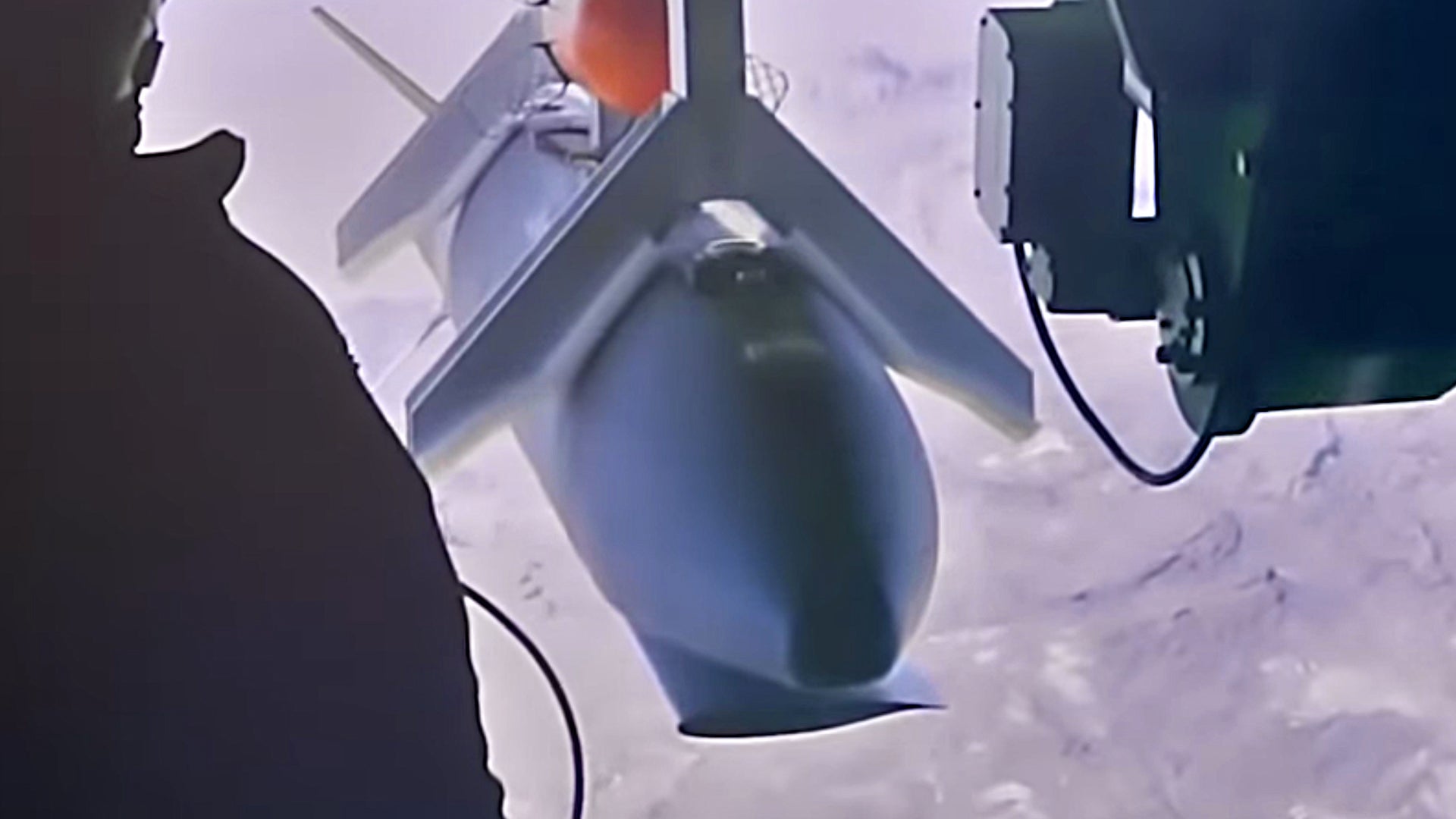Just last April, the Defense Advanced Research Projects Agency (DARPA) selected its team for the final phase of its reusable air-launched and recovered Gremlins drone program. Now DARPA is laying out exactly how the final concept will work and what it aims to prove with flight testing in an awesome new explainer video complete with high-end animation of the final Gremlins configuration in action.
The $32M contract will support the program and its flight testing between 2018 and 2020, after which time DARPA sees the concept moving into an operational state. The team that won the tender is led by Dynetics, with Williams International, Moog, Sierra Nevada Corporation, Systems Engineering, Inc., and its previous competitor for the contract, Kratos, acting as subcontractors on the program.
The concept and its many affiliated technologies are widely viewed as a gateway to a new revolution in air combat—one that could become very lucrative to the players involved with Gremlins as its all but guaranteed that the USAF will rush the capability into an operational state once DARPA’s involvement in the program winds-down.

The video highlights the cooperative swarm concept behind Gremlins. This includes the ability to readily adapt each vehicle to carry different payloads (up to 150lbs), and once networked together they will equal more than the sum of their parts. Secure line-of-sight data-link communications and a level of autonomy that allows the swarm to instantly react to its tactical environment are also cornerstones of its operating concept. We have discussed all these ideas in depth years ago, but seeing them being packaged openly in the non-classified realm is truly exciting and indicative of what likely exists in the clandestine realm.
We also get to see the whole process of aerial recovery in action, having gotten just a glimpse of it in the recent past. The program aims to culminate in being able to recover four Gremlin drones aboard a single aircraft within 30 minutes.
Once recovered, the hope is that the Gremlin drones can be refurbished and refueled within 24 hours for another sortie. Each drone is supposed to have a design life of at least 20 missions. What’s nice about this concept is that as the drones age out they could be used for more risky tasks or even as kinetic weapons themselves as part of a larger swarm. A DARPA press release states:
In addition to preliminary flight tests, the team has focused on risk reduction via extensive modeling and simulation. The team looked at how fifth generation aircraft systems like the F-35 and F-22 respond to threats, and how they could incorporate gremlins in higher risk areas. The gremlins’ expected lifetime of about 20 uses could provide significant cost advantages by reducing payload and airframe costs, and by having lower mission and maintenance costs than conventional platforms, which are designed to operate for decades.
A C-130 from International Air Response is currently acting as the mothership for Gremlins testing, but a variety of other transports could be used for an operational iteration of the concept. DARPA’s release says:
The C-130 is the demonstration platform for the Gremlins program, but Wierzbanowski says the Services could easily modify the system for another transport aircraft or other major weapons system. Modularity has made Gremlins attractive to potential transition partners.
“We are exploring opportunities with several transition partners and are not committed to a single organization. Interest is strong with both the roll-on/roll-off capability of the Gremlins system—as it does not require any permanent aircraft modification—and a wing-mounted system to provide greater flexibility to a wider range of aircraft,” said Wierzbanowski.
The video also clearly states the advantages of an air-launched and recovered system like Gremlins. These positives include smaller airframe sizes, decreased dependency on air base proximity, less cost per mission, and the promotion of distribution of multiple disparate sensors within a single swarm. As a result, these advantages provide a higher capacity for risk-taking, both operationally and developmentally speaking.
We will continue to keep a close eye on the Gremlins program as it enters its final proof-of-concept phase, but above all else, it is another indication that an age of autonomous unmanned air warfare is upon us.
Contact the author: Tyler@thedrive.com
